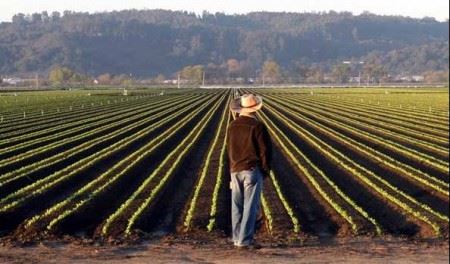California has long held the distinction of being the leading dairy-producing state in the United States. But today the dairy industry in California is at a pivotal crossroads. It’s grappling with a combination of opportunities driven by innovation and shifting consumer preferences, alongside serious challenges posed by environmental regulations, market pressures and labor shortages.
Overview of California’s Dairy Industry
California’s dairy industry is the largest in the United States by milk production. According to the U.S. Department of Agriculture (USDA), the state currently produces about 40 billion pounds of milk, accounting for roughly 18% of total U.S. milk output. This production level positions California well ahead of other major U.S. dairy states, such as Wisconsin, Idaho and New York. Milk/dairy products is the state’s top agricultural commodity, with a production value of about $8.13 billion annually, according to the California Department of Food & Agriculture (CDFA)
There are over 1,100 dairy farms in the Golden State, according to the CDFA, and the vast majority are family-owned operations. Most of these dairy farms are located in the Central Valley, including counties like Tulare, Merced, Stanislaus and Kings, which together produce over half of the state’s milk. Tulare County alone contributes more than 25% of California’s total milk production.
Modern California dairies tend to be large in scale. The average herd size exceeds 1,300 cows per-farm, much larger than the national average of about 300 cows. This scale allows for greater efficiency and lower per-unit production costs, but also amplifies the environmental and regulatory scrutiny that these operations face.
Key Opportunities in California’s Dairy Sector
Despite recent headwinds, there are several significant opportunities that will likely define the future of California dairy.
Growth in value-added dairy products
One of the most promising areas for growth lies in value-added dairy products, such as cheese, yogurt, cottage cheese, butter, protein drinks and milk powders. California is already the nation’s top producer of butter, ice cream and nonfat dry milk. It also ranks second in cheese production.
Consumer preferences are shifting toward specialty, organic, and artisanal dairy products, giving producers a chance to diversify beyond fluid milk, which has seen declining per-capita consumption for decades, although fluid milk sales rebounded in 2024.
In 2024, Americans consumed 1.9% more cow’s milk than they did in 2023, with U.S. producers selling 40 million additional gallons to domestic drinkers, according to data from grocery industry research firm Circana. It was the beverage’s first year-over-year sales increase since 2009 – and only the second since the 1970s. The dairy industry is watching closely to see if increased cow’s milk consumption is a growing trend, or if 2024 was an aberration.
California’s dairy processors are capitalizing on the value-added dairy products trend by investing in advanced processing technologies and export-grade production facilities. According to the California Milk Advisory Board (CMAB), more than 45% of the state’s milk is used for cheese production, and the demand for specialty cheeses – especially from export markets – is rising.
Export expansion and global markets
Global demand for dairy, especially in markets like China, Southeast Asia and the Middle East, continues to rise. California is strategically positioned with ports like Oakland and Los Angeles/Long Beach, making it a key player in dairy exports. In 2024, California dairy exports reached nearly $2 billion, with milk powders, whey and cheese leading the way.
Investment in international marketing, improved trade agreements and a focus on meeting international standards (such as halal and kosher certification) could further open global markets to California dairy products.
On the other hand, tariffs and the uncertainty surrounding them threaten California dairy product exports to these and other countries, including neighbors Canada and Mexico. New and fair trade agreements with key export nations are needed if California dairy is to continue to grow its exports in 2025 and beyond.
Sustainability and renewable energy
One of the most transformative opportunities on the horizon comes from the dairy industry’s efforts to meet California’s aggressive climate goals. Many dairy farms are adopting manure digesters that capture methane and convert it into renewable natural gas (RNG). As of early 2025, there are over 120 dairy digesters in operation across the state.
These projects are eligible for incentives under California’s Low Carbon Fuel Standard (LCFS), creating a new revenue stream for dairies. Methane capture and conversion technologies are not just about compliance, they’re becoming profitable and are helping reshape the public perception of dairy farming as part of the solution to climate change.
Top Challenges Facing California’s Dairy Industry
While the future holds promise, California dairy producers are contending with multiple overlapping challenges that threaten their sustainability and future growth.
Water scarcity and drought
Water is a perennial concern in California agriculture, and dairy farming is no exception. Producing feed crops like alfalfa and corn requires substantial irrigation. Persistent drought conditions have forced many dairies to reduce herd sizes or relocate to states with lower water costs, such as Texas or Idaho.
The Sustainable Groundwater Management Act (SGMA), implemented to regulate groundwater use in critically overdrafted basins, will continue to restrict access to water in coming years. For example, some experts estimate that up to 20% of irrigated farmland in the San Joaquin Valley may be fallowed by 2040 due to SGMA requirements.
Labor shortages
Labor remains one of the most critical pain points for California dairy operations. Dairying is labor-intensive, and much of the workforce consists of immigrants, many of whom are undocumented. Strict immigration enforcement, combined with limited access to H-2A visa programs (more commonly used in crop agriculture), has created chronic labor shortages.
Automation in milking and feeding systems offers a partial solution, but the capital investment required is significant and often out of reach for small and mid-sized operations.

Public health concerns: Avian influenza outbreak
Avian influenza (H5N1) has significantly impacted California’s dairy industry since its first detection in the state’s herds in August 2024. As of April-May 2025, the CDFA reported 749 infected dairies, with over 600 of them released from quarantine after recovery.
The H5N1 virus, initially affecting poultry in 2022, was first identified in U.S. dairy cattle in March 2024. California has been the epicenter of the outbreak, accounting for approximately 70% of the nation’s dairy cattle cases. The virus’s spread among cattle is not fully understood, with hypotheses including transmission through wildlife or contaminated dust.
Avian influenza cases have recently been declining but, according to the CDFA, the threat hasn’t fully passed. New infections are still being detected, though not as frequently as before. A growing number of dairy farms are being released from quarantine after recovery but some still have active infections.
The H5N1 virus still poses an overall challenge to California dairy but that challenge is much less in June 2025 than has previously been the case.
Environmental regulations and climate compliance
California leads the nation in environmental regulations. While this positions the state as a global leader in sustainability, compliance is costly. Regulations cover air and water quality, waste management, greenhouse gas emissions and more.
The California Air Resources Board (CARB) has mandated a 40% reduction in methane emissions from 2013 levels by 2030. While incentives are available, the cost of compliance is high. Small farms, in particular, struggle to afford digesters or manure separators, which can cost $3 million or more per installation.
Additionally, regulatory compliance often involves a complex and time-consuming permitting process, discouraging investment and innovation.
Volatile milk prices and input costs
Milk prices are notoriously volatile and influenced by global supply-demand dynamics. In recent years, farmers have faced price swings ranging from $13 to $25 per hundredweight (cwt), making long-term planning difficult.
Compounding this issue are rising input costs, particularly for feed, fuel, and energy. Feed prices have been highly unstable due to supply chain disruptions and climate impacts in grain-producing states. According to the USDA, feed represents over 50% of the total cost of dairy production.
This economic uncertainty is driving consolidation in the industry, with many smaller dairies exiting the business. According to USDA, CDFA and other sources, California lost about 50 dairies in 2023 and about 75 in 2024, continuing a long-term trend of attrition.
California Dairy: A Resilient but Strained Industry
The California dairy industry is at a transformative moment. Its strengths – which include scale, innovation, overall climate advantage and market access – position it well to lead the nation and the world in dairy innovation. From methane digesters and renewable energy to growing exports and value-added products, the industry is embracing new paradigms that could secure its long-term future.
Yet the path forward is not without serious risks. Water scarcity, labor constraints, regulatory burdens and economic volatility are pushing many dairy farmers to the brink. The industry is becoming increasingly bifurcated, with large-scale producers able to adapt and thrive, while smaller operations struggle to survive.
Public policy will play a critical role in determining the future trajectory of California dairy. Continued investment in sustainable agriculture, labor reform, infrastructure and trade partnerships will be essential.







